Contributed by Steve Price via Jane Hart
Contributed by Jeff O’Donnell

Contributed by Steve Price via Jane Hart

Contributed by Jeff O’Donnell





IThe owners were split: was Dobbin really okay to run in this afternoon’s Derby?

A diet of fireflies and glow worms kept Simon’s utility bills nice and low

Little brother Taunton was thumbs down on Julie Grace’s reptile hairdo

Emmy, the one-eyed shelter cat, felt whole again at the Woodfields’

Crowd control was Marina’s true calling
Photos and art by Jane Hart

Photo by Greg Lozier

A stone planter
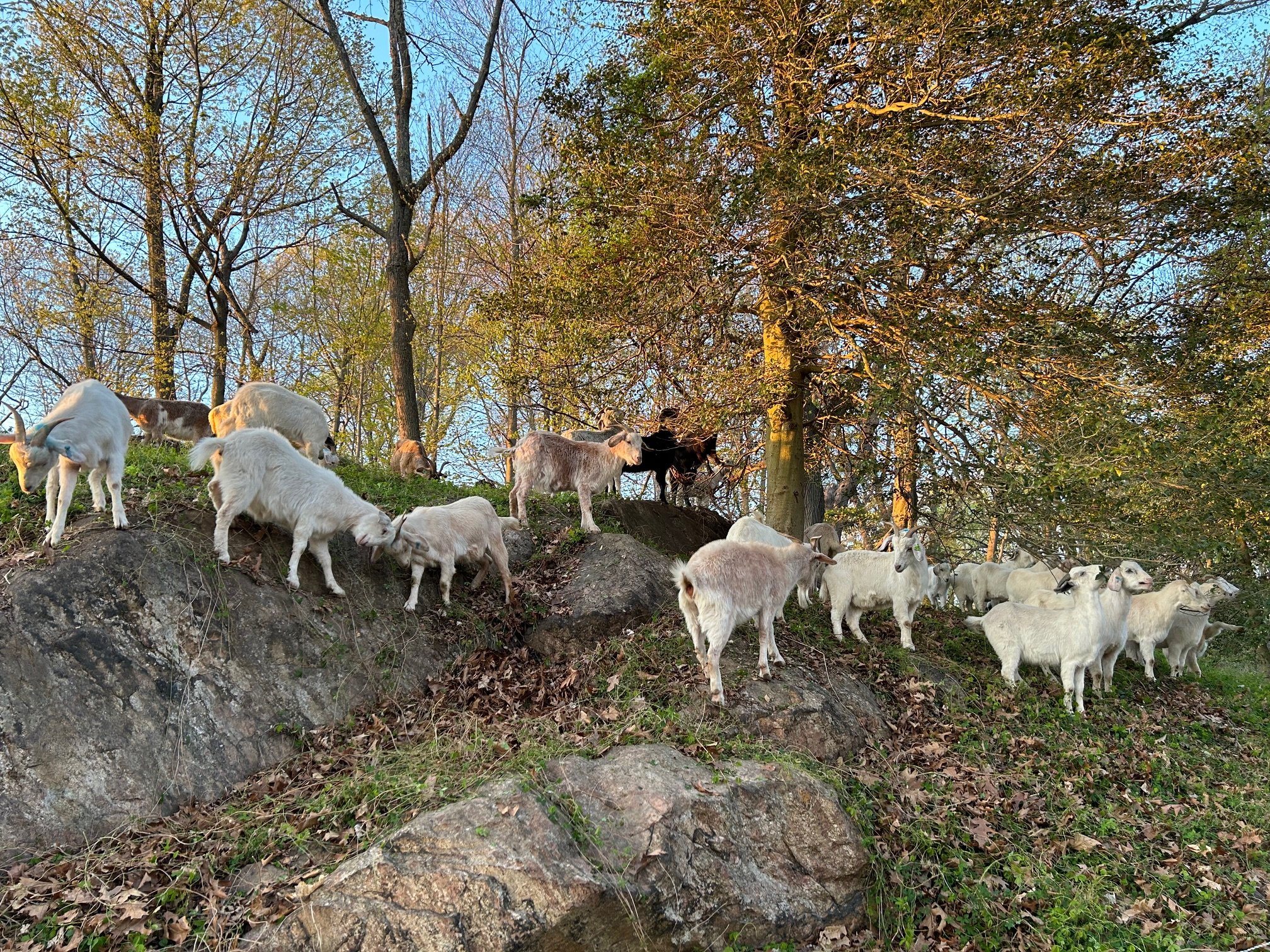
Have you heard: our herd returns!

Photo by Joe Bruno



Photos by Carolyn Reiss

Photo by Joe Bruno
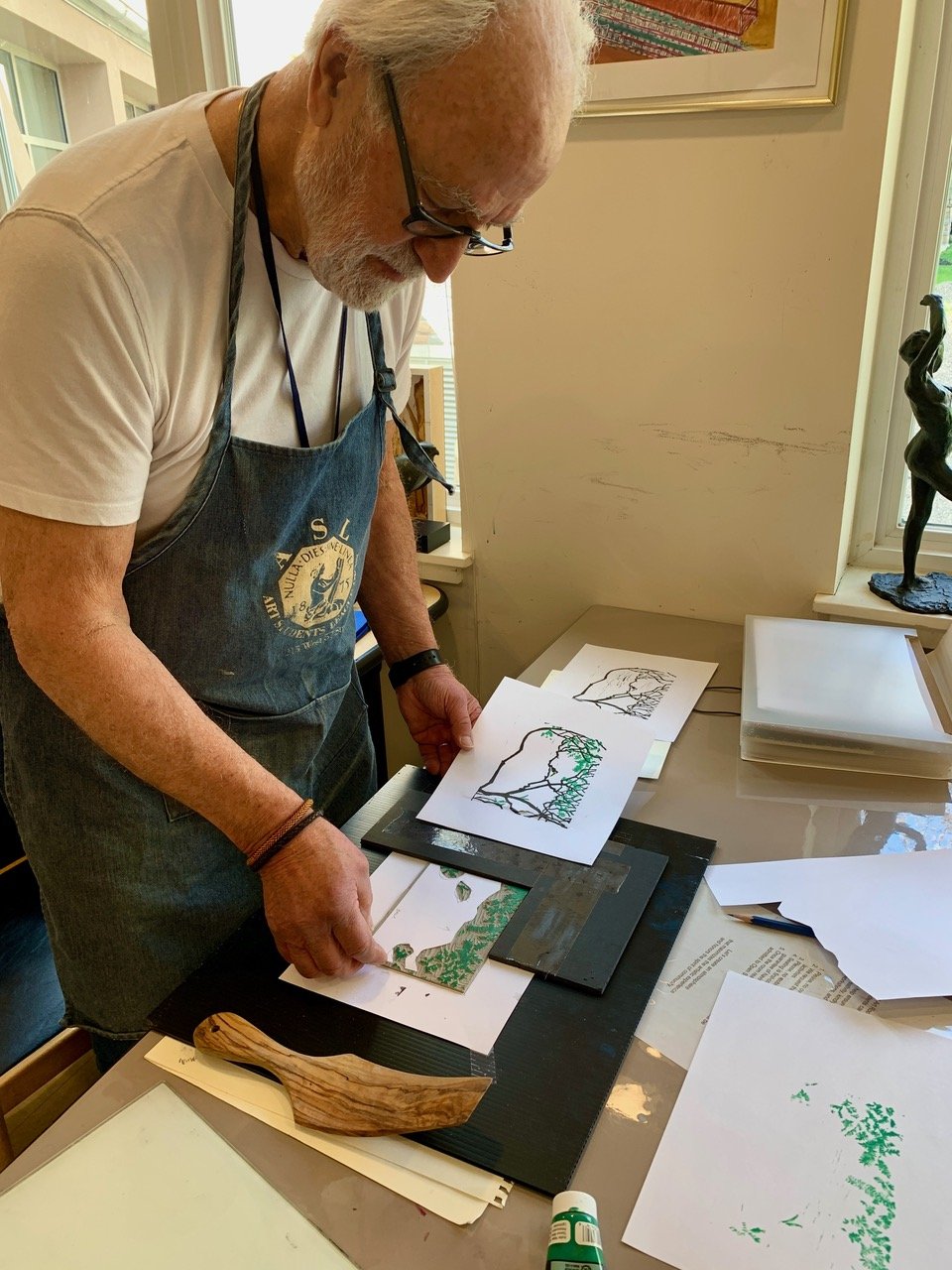
Philip Monteleoni creating a linoleum-block print
Photo by Harry Bloomfeld
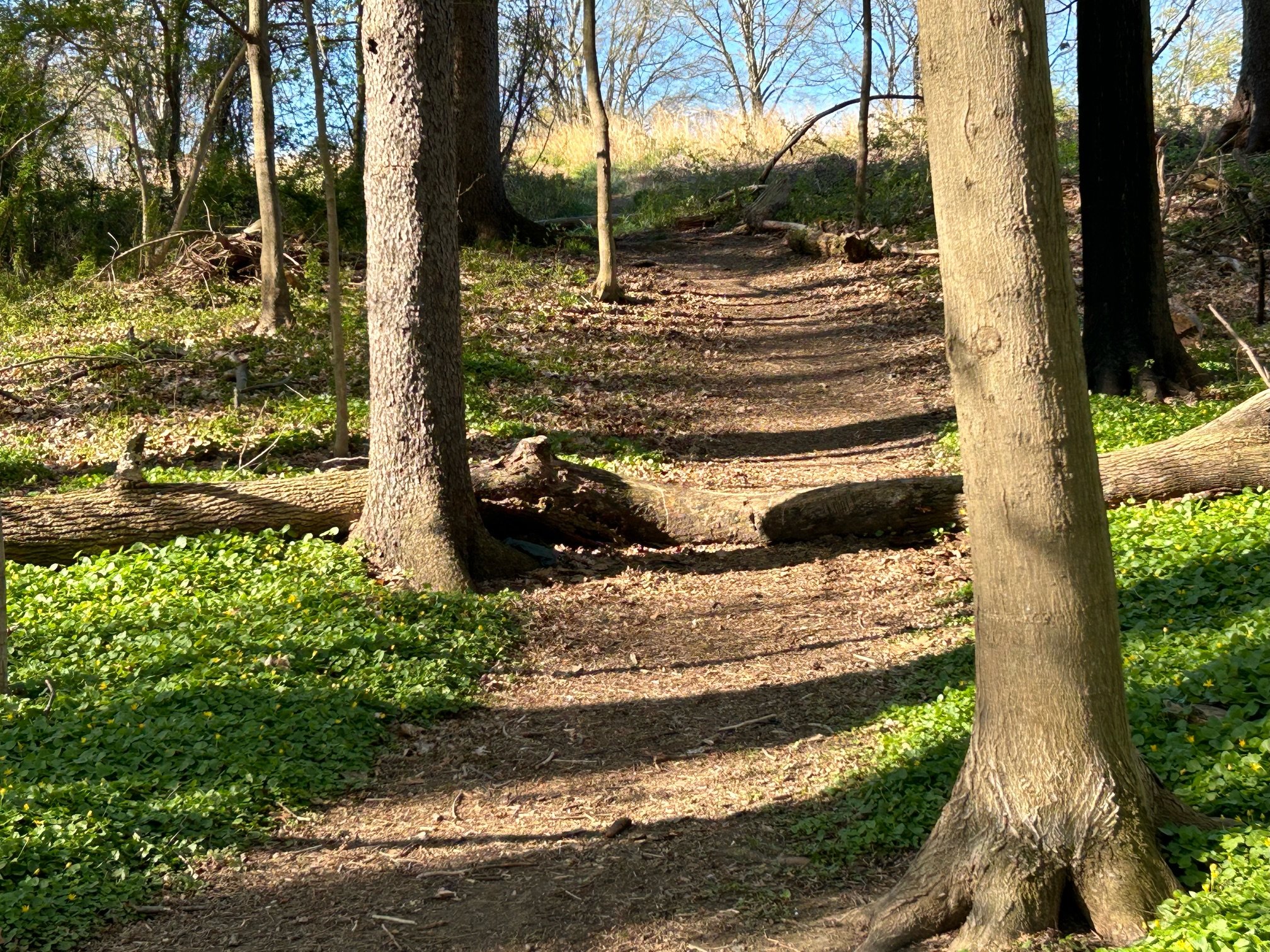




And home again — to our own beauty

Photo by Art Brady

Blooming Redbud Tree

Mallards happy to be back at Kendal
Photos by Joe Bruno
On April 24, a band of Kendalites rode up to East Haven, CT, to Shore Line Trolley Museum for a guided tour of the museum’s collection and a ride aboard an historic electric trolley.

Photo by Harry Bloomfeld

Photo by Harry Bloomfeld

Photo by Harry Bloomfeld

Photo by Harry Bloomfeld

Photo by Cynthia Ferguson

Photo by Art Brady
On April 26, 20 Kendalites visited the Women’s History Institute of the Historic Hudson Valley organization. The Women’s Historic Institute (WHI) brings to life the hidden stories of everyday women of the Hudson Valley who shaped the area’s life and culture. Like many other museums, initially, the Historic Hudson Valley (HHV) focused on the contributions made by prominent men to American government and society. However, the researchers typically neglected another — and rather compelling version of history — the hidden stories of the everyday women who shaped their families, communities, and the nation. The WHI has corrected the historical record by introducing us to the daily life and many achievements of previously unheralded women. The WHI is part of The Historic Hudson Valley’s Library, restoring, preserving, and interpreting historic landmarks of national significance to the Hudson River Valley.
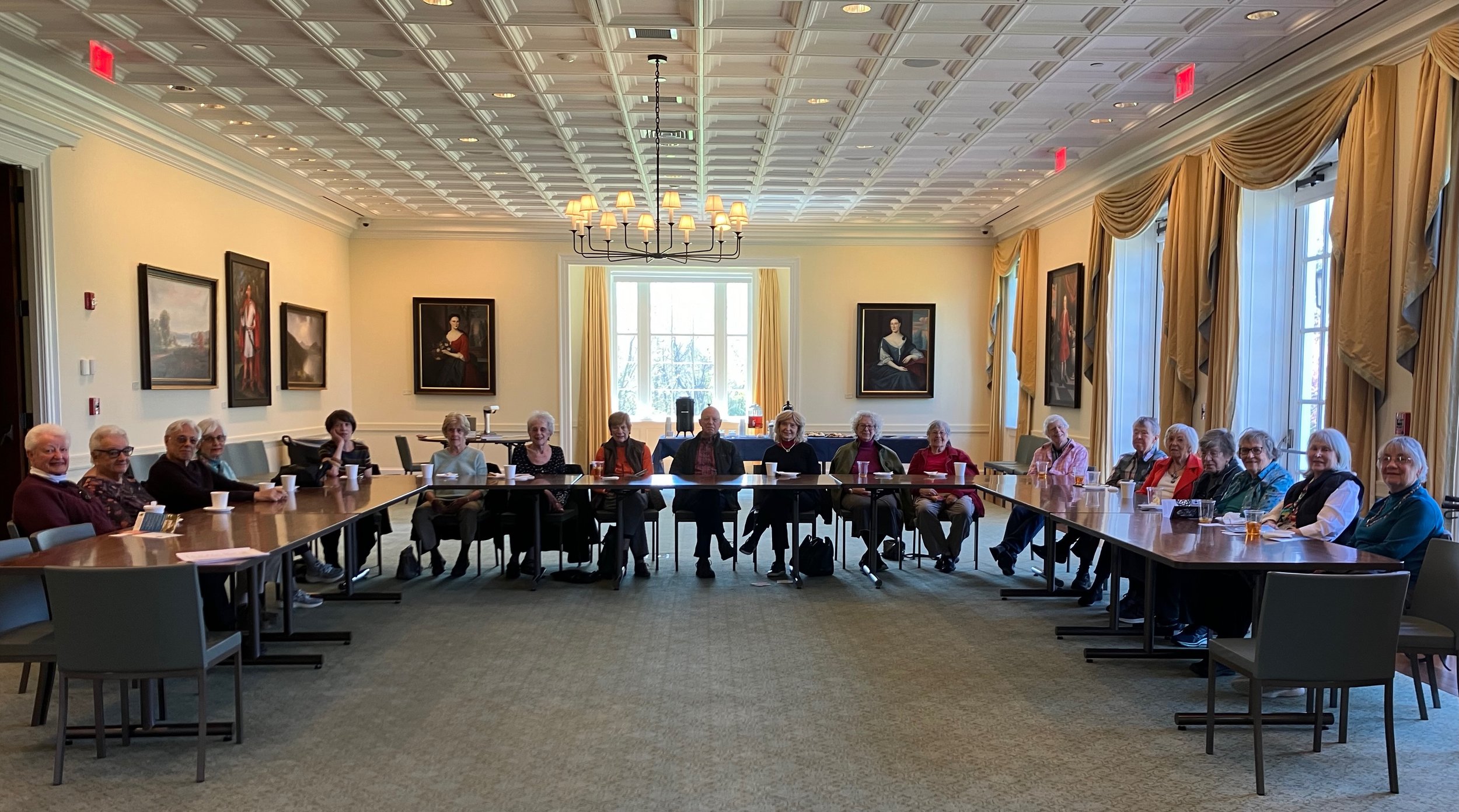


Akin to a Farmer’s Almanac
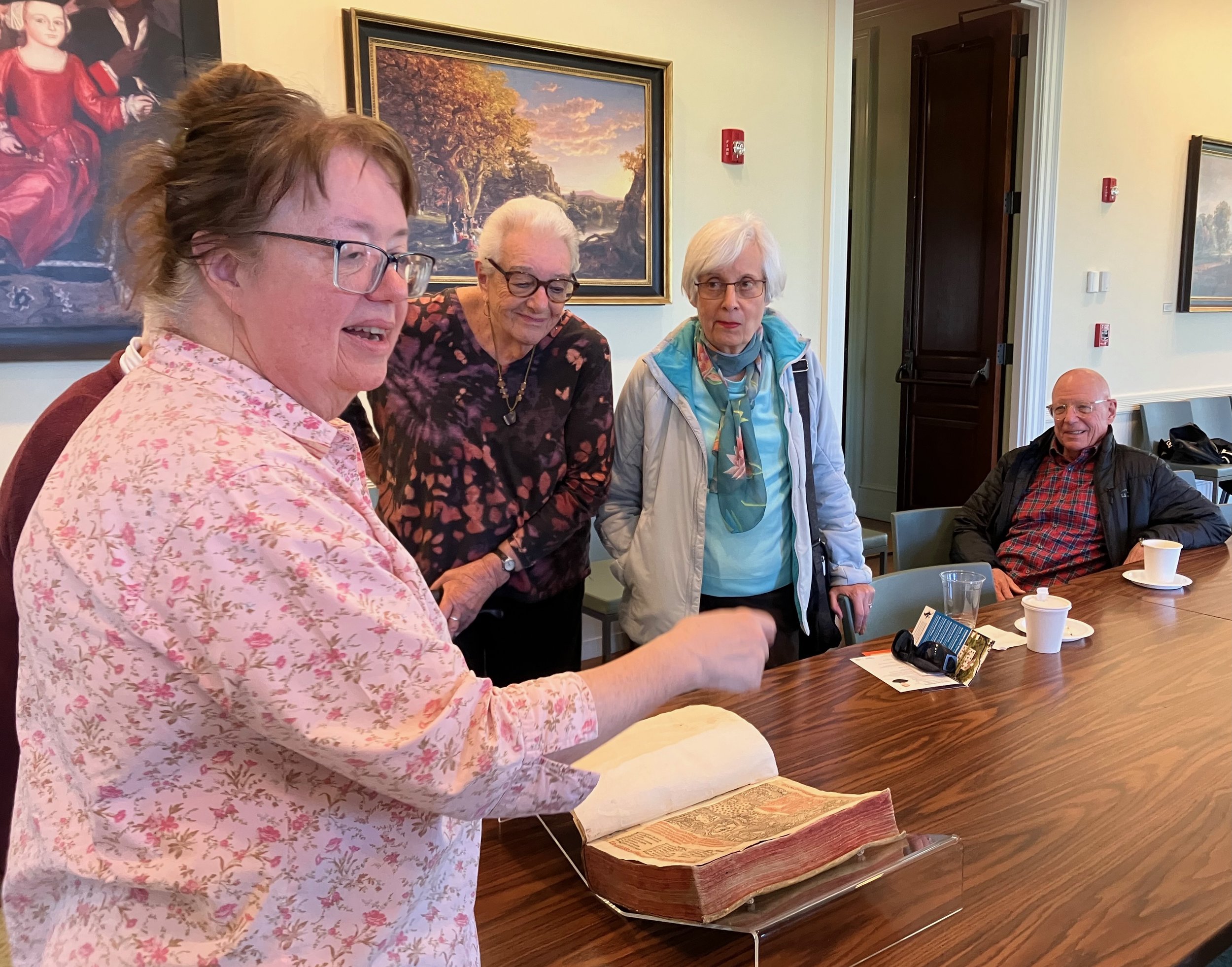

Photos by Mimi Abramovitz

Someone made suggestions for our vacation plans for this year. So many choices!
I have been in many places, but I’ve never been in Cahoots. Apparently, you can’t go alone. You have to be in Cahoots with someone else.
I’ve also never been in Cognito. I hear no one recognizes you there.
I have, however, been in Sane. They don’t have an airport; you have to be driven there. I have made several trips there, thanks to my friends, family and work.
I would like to go to Conclusions, but you have to jump, and I’m not too much on physical activity anymore.
I have also been in Doubt. That is a sad place to go, and I try not to visit there too often.
I’ve been in Flexible, but only when it was very important to stand firm.
Sometimes I’m in Capable, and I go there more often as I’m getting older.
One of my favorite places to be is in Suspense! It really gets the adrenaline flowing and pumps up the old heart! At my age I need all the stimuli I can get.
I may have been in Continent, but I don’t remember what country I was in. It’s an age thing. They tell me it is very wet and damp there.
Contributed by Barbara Wallach

Jean Eccleston (far left) and Hildegarde Gray (center, with Fred right behind) at the Kendal Sponsor Booth with official Rubber Ducky Day Cheer Leaders

A grueling day for the duckies! The Sponsor Heat is really for a warm-up. With each successive heat, the winners are recorded until the Final Heat — when the six winners battle it out for the ultimate glory! (Autograph-seekers are discouraged after each heat, since the athletes must rest prepare for the next heat.)

The athletes dive quickly (and gracefully) into the stream . . .

They quickly take their positions. Some go for the front, others — understanding that they can save their energy for the final surge — chose the back.

And they’re off!
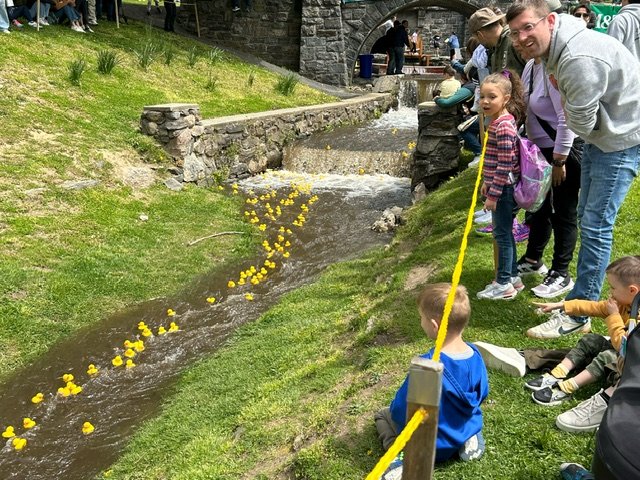
The crowd cheers on its favorites as the duckies surge past! Tension rises as the duckies reach into their very souls for the stamina needed to stay in the race, much less to win it.

And we have a winner! Race officials help the exhausted ducks off of the track (along with those who, literally, got lost in the weeds on the way to the finish line) so they can rest up for the next heat.
Continued from Last Week
Nursery rhymes, some dating back centuries, have left a strong mark on many of our childhoods, but we often don’t realize where they came from. Some have evolved over centuries, bringing a whole new version to modern children, while others have remained tried and true since their inception. From women’s prisons and peep shows to wholesome tales of beloved pets, here are the origins of some beloved nursery rhymes.

Here we go round the mulberry bush
The mulberry bush
The mulberry bush
Here we go round the mulberry bush
On a cold and frosty morning
Although this rhyme likely started out using Bramble Bush (mulberries actually grow on trees), historian R. S. Duncan suggests this version came about at Wakefield Prison in England. The facility has been home to an extremely recognizable mulberry tree for centuries, and the theory goes that Victorian female prisoners used to dance around it and made up the rhyme to keep their kids amused. (Back then, men, women, and children were often confined together.) The tree eventually died in 2017, but it was replaced with a cutting from the original.
Source: Interestingfacts.com
To Be Continued . . .
Contributed by Jane Hart

May 6 is International No Diet Day (INDD)
Mary Evans Young created No Diet Day in the early 1990s when she saw how many of the powerful women she worked with put a great amount of their energy into trying not to have a cookie during an intermission in the program she was teaching. Originally on May 5, lNDD changed to May 6 after it went international, to avoid a scheduling conflict with Cinco de Mayo.
Contributed by Barbara Bruno
Amazing proof that, as time goes by, we begin to resemble our dogs — or vice versa . . .

Contributed by Simone

A woman and her 12-year-old son were riding in a taxi in Detroit. It was raining and all the prostitutes were standing under awnings.
“Mom,” said the boy, “what are all those women doing?”
“They’re waiting for their husbands to get off work,” she replied
The taxi driver turns around and says, “Geez lady, why don’t you tell him the truth? They're hookers, boy! They have sex with men for money.”
The little boy’s eyes get wide and he said, “Is that true, Mom?”
His mother, glaring hard at the driver, answers “Yes.”
After a few minutes the kid asks, “Mom, if those women have babies, what happens to them?”
She responded, “Most of them become taxi drivers.”






Traveling form
easily I slide into a meditation
on beauty and intimacy
found in the natural world
each curve
each changing shape of a form
traveling across the sky
freedom of movement
changing mood
from joy to sadness
whispers a tale
a tactile and visual journey
a medium for story telling


The kids had binge-watched Lassie all night

Floofy didn’t even try to hide her boredom

Roebuck was willing to meet Sears more than halfway

Guess which Sloman twin hogged the tanning bed

Cotter was the new kickboxing sensation at the senior center
Art and photos by Jane Hart

Photo by Carolyn Reiss

Enclosed Green
Photo by Edward Kasinec

Rockwood’s Secret Garden
Photo by Edward Kasinec

Torrents of Pink
Photo by Edward Kasinec

Fresh Swamp Cabbage along the Brook
Photo by Carolyn Reiss

Storm’s A-Comin’
Photo by Carolyn Reiss

Mocking Bird in Flight

Tree Swallow, Upon Arrival
Photo by Carolyn Reiss

Tree Swallow, Upon Departure
Photo by Carolyn Reiss
The First Purple Martens
Photo by Carolyn Reiss

The Eclipse: in Abstract
Photo by Carolyn Reiss
The KoH Tuesday Morning Club celebrates its 13th birthday this year! Such a milestone deserves a commemoration, and Kendal couldn’t have agreed more. The celebration took the form of a tea party: tea sandwiches, scones, cake, and music. There even was even dancing in the aisles!




Contributed by Sally Costa
Nursery rhymes, some dating back centuries, have left a strong mark on many of our childhoods, but we often don’t realize where they came from. Some have evolved over centuries, bringing a whole new version to modern children, while others have remained tried and true since their inception. From women’s prisons and peep shows to wholesome tales of beloved pets, here are the origins of some beloved nursery rhymes.

Mary had a little lamb
Little lamb, little lamb
Mary had a little lamb
Its fleece was white as snow
Poet Sarah Josepha Hale first published a version of this poem in 1830. Around 50 years later, an elderly woman named Mary Sawyer stepped forward as the real Mary. Sawyer’s story goes pretty much like the version we know and love today. She rescued a little lamb that had been abandoned by its mother and hand-fed it until it regained its health. One morning, she and her brother decided to bring the lamb to school. The lamb hid in a basket by Mary’s feet until it bleated, drawing attention from the teacher, who gently let the lamb outside so Mary could bring it home at lunch. The other kids did, indeed, laugh.
In a letter included in a 1928 book detailing the story, Sawyer says that the lamb grew up and had a few lambs of its own.
Source: Interestingfacts.com
To Be Continued . . .
Contributed by Jane Hart
Students in an advanced Biology class were taking their mid-term exam. The last question was “Name seven advantages of Mother’s Milk.” The question was worth 70 points or none at all. One student was hard put to think of 7 advantages. He wrote:
1) It is the perfect formula for the child.
2) It provides immunity against several diseases.
3) It is always the right temperature.
4) It is inexpensive.
5) It bonds the child to the mother and vice versa.
6) It is always available as needed
And then the student was stuck. Finally, in desperation, just before the bell rang indicating the end of the test he wrote:
7) It comes in two attractive containers and it’s high enough off the ground where the cat can’t get it.
He got an A+.
Contributed by Bob Abramovitz

Contributed by Sally Kellock






Terry’s birthday party was wild

When it came to poultry fashion design, Yves-Charles was crushing it

Runch-Higgins rested on his laurels so long, they took root

Nobody judged Mrs. Jervis as harshly as her own inner jury

Suzette’s Alley Cat chic was taking the fashion industry by storm

Murf was bluegrass to the core
Art and photos by Jane Hart
power of a tree
just look just listen
my footsteps move slowly
like dancing shadows
my faint melodies go unnoticed
but they tell a story
echoes of dreams
like the trail
a snail leaves behind
if only I could become a tree
peace and hope would be
possible in the world
a tree could turn on a light


Photo by Cynthia Ferguson

Photo by Peter Sibley

A Cascading Bouquet
Photo by Edward Kasinec

Beauty from a Stone
Photo by Edward Kasinec

Photo by Peter Sibley
© Kendal on Hudson Residents Association 2015, 2016, 2017, 2018, 2019, 2020, 2021, 2022 all rights reserved. Please do not reproduce without permission.
Photographs of life at Kendal on Hudson are by residents.